
Roots
The journey to understanding why textured hair yearns for moisture, often appearing to release it as quickly as it receives, begins not with a lament, but with a deep, respectful gaze into its very being. It is a hair type that carries stories within its coils and kinks, a legacy woven into its very structure. To truly grasp its relationship with hydration, we must descend to the microscopic, to the very heart of the strand, where its unique architecture dictates its every interaction with the world around it. This is not merely about addressing a common concern; it is an invitation to appreciate the profound biological and historical narrative held within each strand.
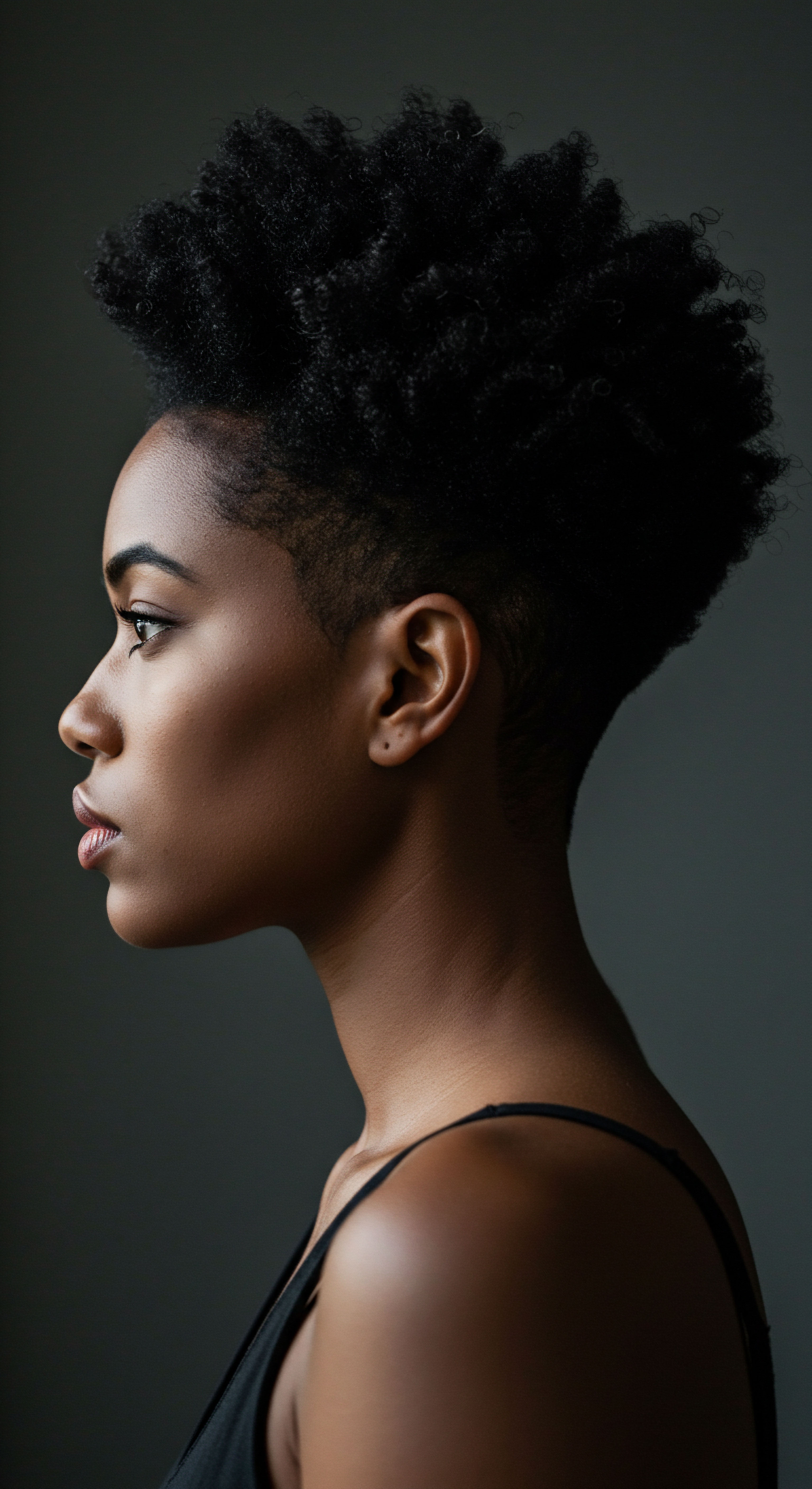
The Architecture of Textured Hair
Each strand of textured hair possesses a distinct structural blueprint, setting it apart from its straighter counterparts. Unlike the more cylindrical cross-section of straight hair, textured hair often presents an Elliptical or Flattened Cross-Section. This inherent shape causes the hair shaft to twist and bend along its length, creating natural points of vulnerability. These twists, while giving textured hair its magnificent shape and spring, also mean that the cuticle layers—the protective outer shingles of the hair—do not lie as uniformly flat or tightly sealed as they might on a straight strand.
The cuticle, a transparent shield composed of overlapping cells, serves as the hair’s primary defense against environmental stressors and moisture loss. On textured hair, these cuticle scales tend to be more lifted or irregular at the points where the strand curves and coils. Think of it like a tiled roof with some tiles slightly raised at the corners of the eaves; while still protective, these subtle openings present more pathways for moisture to escape and for external aggressors to enter. This anatomical distinction is fundamental to comprehending its moisture dynamics.

The Core of the Strand
Beyond the cuticle, the cortex constitutes the bulk of the hair fiber, containing keratin proteins and responsible for hair’s strength and elasticity. While the cortex of all hair types shares fundamental components, the arrangement and distribution of these components within textured hair can also influence its moisture retention. The medulla, the innermost core of the hair shaft, can be discontinuous or absent in some textured hair strands, contrasting with its more consistent presence in other hair types. The precise role of the medulla in moisture regulation remains an area of ongoing scientific inquiry, but its structural variations hint at subtle differences in water movement within the fiber.
Textured hair’s unique elliptical cross-section and inherent twists lead to less uniformly sealed cuticle layers, creating pathways for moisture to escape.
Understanding these foundational elements provides a scientific lens through which to view the hair’s constant quest for hydration. It is not a flaw, but a characteristic born from its very design, a design that allows for its incredible diversity in shape and form.
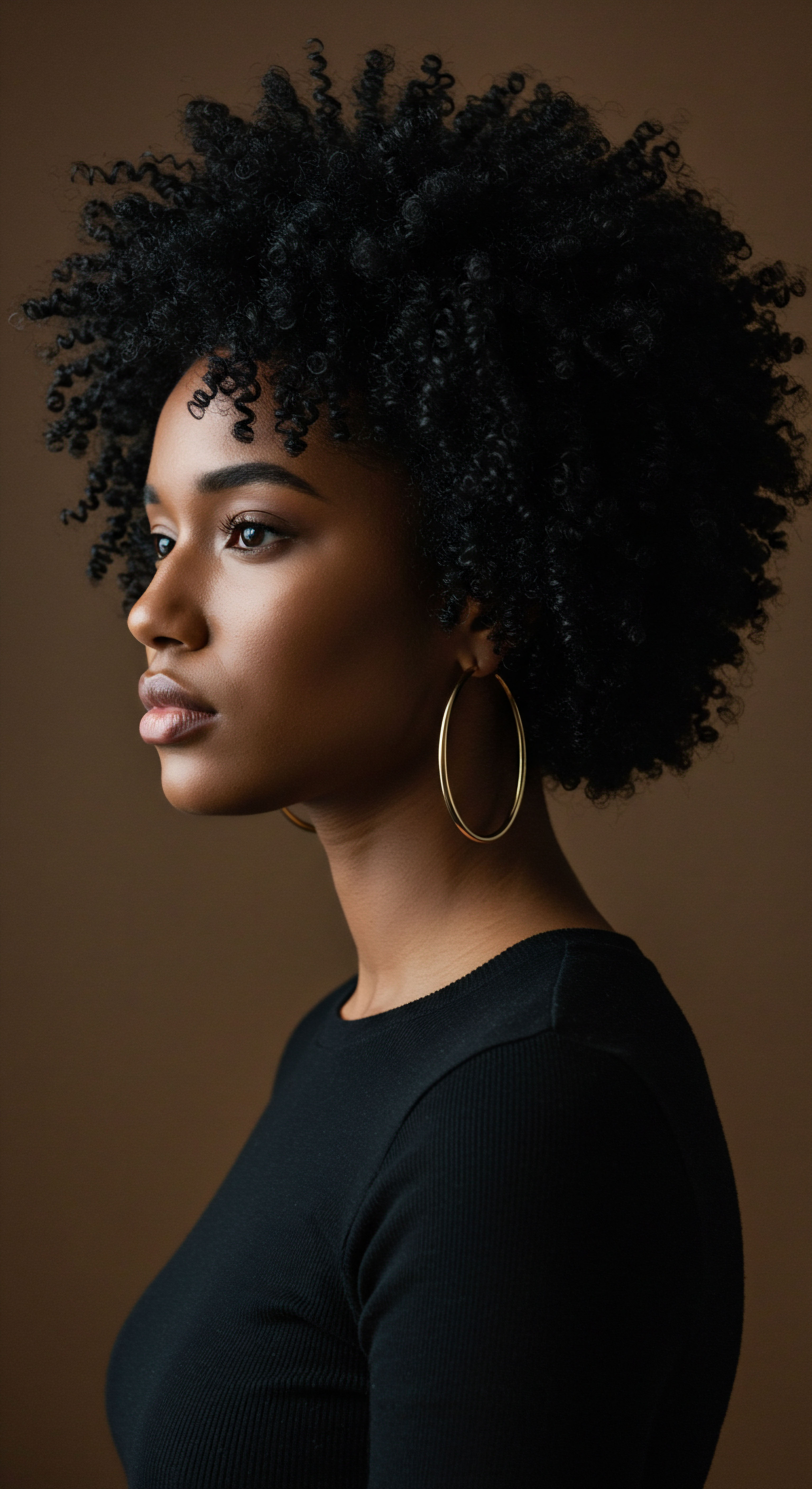
Hair Fiber Composition and Water Interaction
The very materials that construct the hair fiber, primarily keratin proteins, interact with water molecules. Keratin is a hygroscopic material, meaning it readily absorbs water from the atmosphere. However, the manner in which water is held within the hair, whether bound tightly to protein structures or simply filling voids, influences its ease of release.
The specific amino acid composition and the disulfide bonds within the keratin matrix can affect the hair’s capacity to bind and retain water. Textured hair, with its denser packing of protein chains in certain areas due to its irregular shape, may present different internal moisture gradients.
| Hair Structure Aspect Cross-Section Shape |
| Common Characteristic in Textured Hair Elliptical to flattened |
| Moisture Loss Implication Increased surface area exposure, leading to faster evaporation. |
| Hair Structure Aspect Cuticle Layer |
| Common Characteristic in Textured Hair More lifted, less uniformly sealed |
| Moisture Loss Implication Easier egress of water molecules, reduced barrier function. |
| Hair Structure Aspect Twists and Bends |
| Common Characteristic in Textured Hair Frequent along the shaft |
| Moisture Loss Implication Points of structural weakness and cuticle disruption. |
| Hair Structure Aspect Protein Packing |
| Common Characteristic in Textured Hair Denser in curved regions |
| Moisture Loss Implication Potential for varied water absorption and desorption rates internally. |
These foundational differences in structure and composition lay the groundwork for why textured hair often experiences moisture loss more readily. It is a biological reality, yet one that, once understood, can be navigated with informed care.
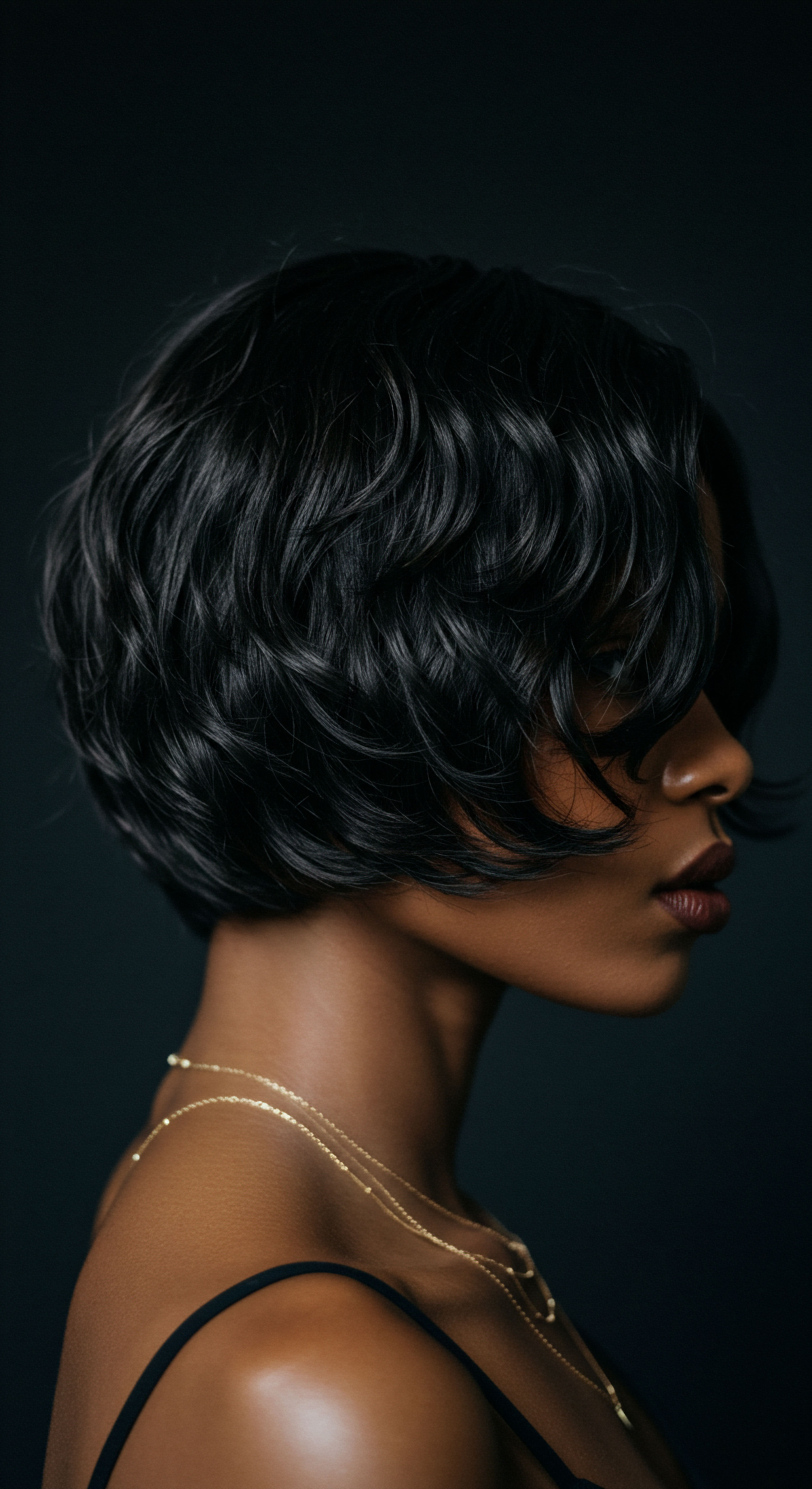
Ritual
Moving from the microscopic anatomy of textured hair, our attention turns to the rhythms of care, the daily and weekly rituals that either replenish or inadvertently deplete its vital moisture. These practices, passed down through generations or refined by contemporary understanding, form the practical dialogue we have with our strands. The way we cleanse, condition, and style profoundly impacts the hair’s ability to hold onto the hydration it so deeply desires.
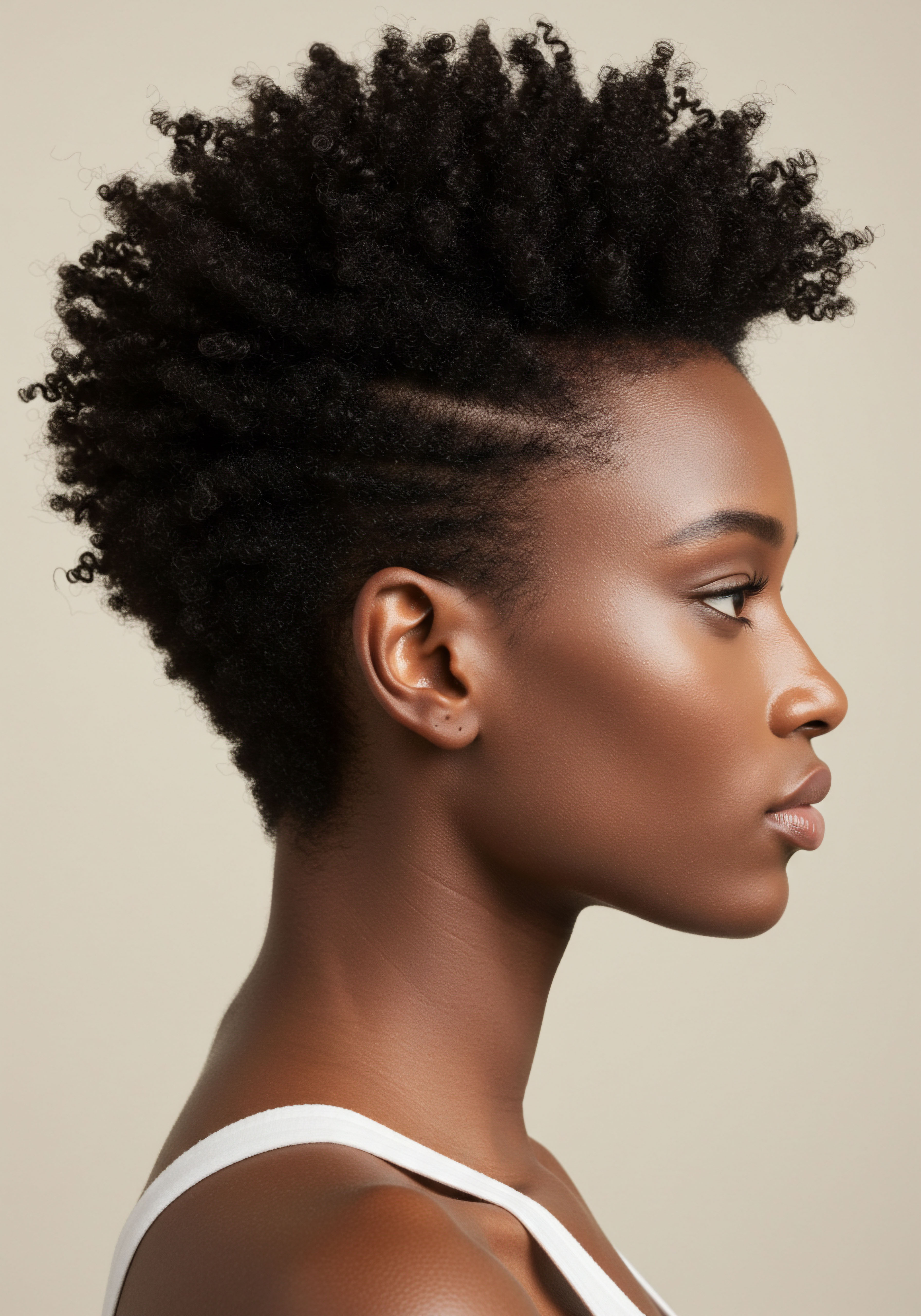
Cleansing with Consideration
The act of cleansing, while essential for removing impurities and product buildup, can strip the hair of its natural oils, known as sebum. Sebum provides a protective coating that helps seal the cuticle and prevent moisture evaporation. Textured hair, with its often less uniform cuticle and the meandering path sebum must travel down the hair shaft, is already predisposed to dryness. Harsh shampoos containing strong sulfates can aggressively remove these precious lipids, leaving the hair feeling brittle and parched.
A mindful approach to cleansing involves selecting gentle, sulfate-free cleansers or opting for co-washing (conditioner-only washing). These methods cleanse without excessively disrupting the hair’s natural moisture balance. The frequency of washing also plays a significant role; less frequent cleansing allows natural oils to accumulate and provide a more consistent barrier.
- Gentle Cleansers ❉ Choose products formulated without harsh sulfates to preserve natural oils.
- Co-Washing ❉ Utilize conditioning cleansers to refresh strands without stripping moisture.
- Reduced Frequency ❉ Extend time between washes to allow sebum to coat the hair.
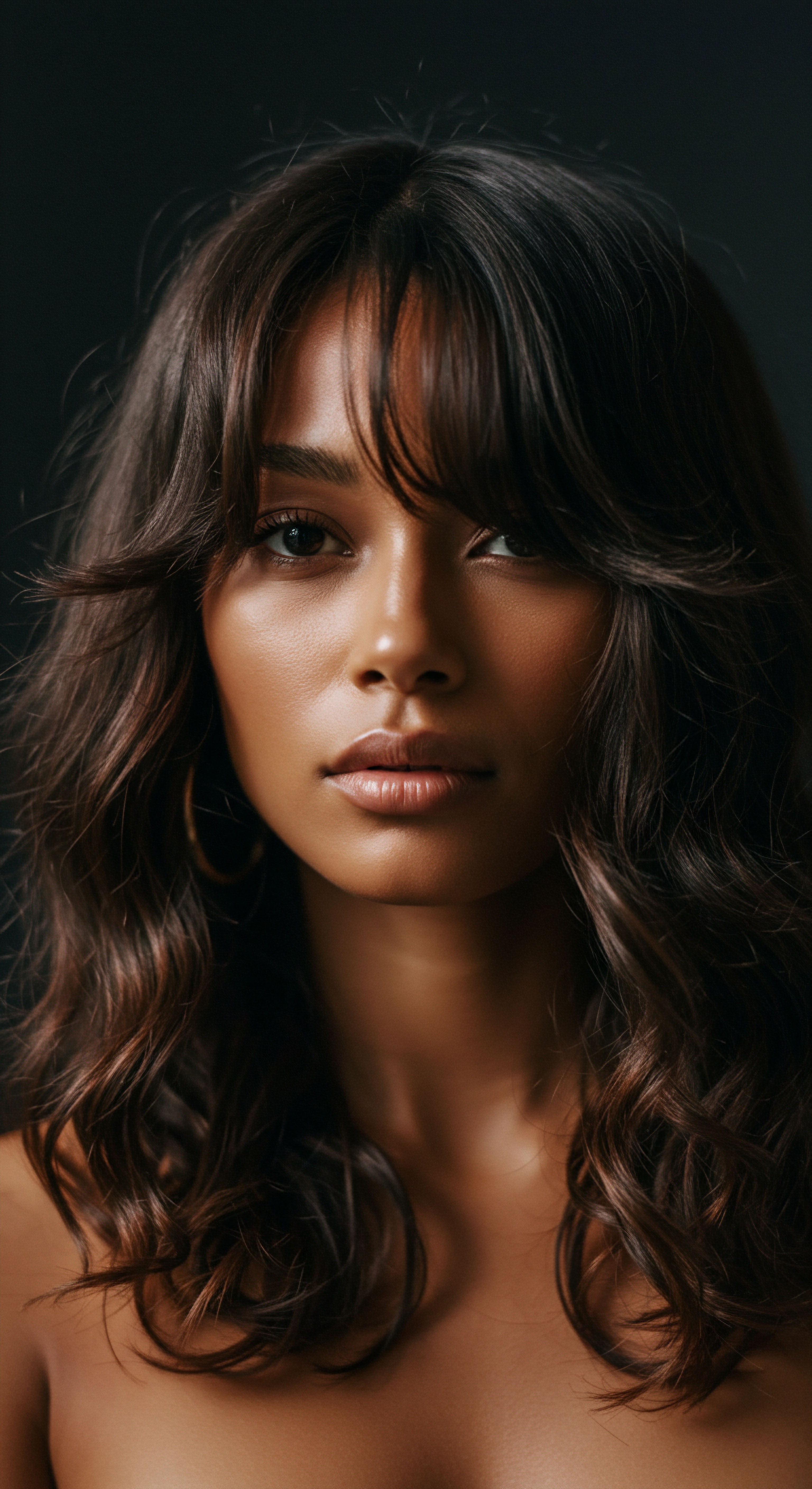
The Art of Conditioning
Conditioning is perhaps the most critical step in replenishing moisture for textured hair. Conditioners work by smoothing the cuticle, providing a temporary seal, and depositing humectants and emollients that attract and hold water. Deep conditioning treatments, often left on for extended periods with the aid of heat, allow these beneficial ingredients to penetrate more effectively into the hair shaft, offering sustained hydration.
The choice of conditioner matters. Ingredients like fatty alcohols, natural oils, and humectants such as glycerin or hyaluronic acid draw moisture into the hair and help to lock it in. Regular, consistent conditioning creates a cumulative effect, gradually improving the hair’s overall moisture retention over time.
Mindful cleansing and consistent, deep conditioning are pivotal practices for maintaining textured hair’s moisture balance.
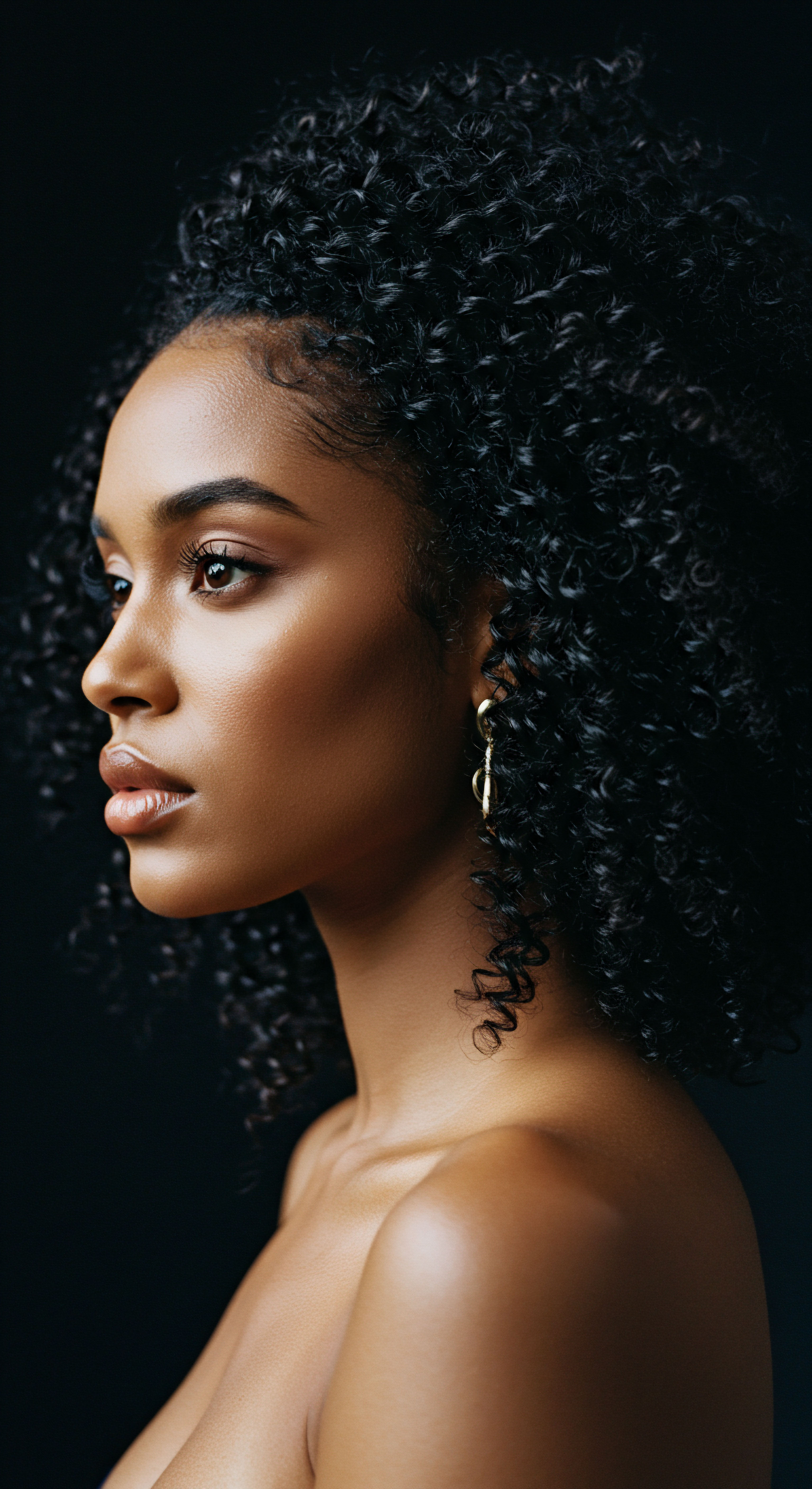
Styling and Sealing Strategies
After cleansing and conditioning, the way textured hair is styled significantly impacts its moisture levels. The “LOC” or “LCO” method (Liquid, Oil, Cream or Liquid, Cream, Oil) is a popular and effective strategy for sealing moisture into the hair shaft.
- Liquid ❉ A water-based product (like a leave-in conditioner or plain water) provides the initial hydration.
- Oil ❉ A natural oil (such as jojoba, argan, or shea butter) forms a protective layer over the hair, helping to trap the water inside.
- Cream ❉ A heavier cream or butter provides additional moisture and a more robust seal, further reducing evaporation.
This layering approach creates a barrier that slows down the rate at which water escapes from the hair fiber. Without such sealing practices, the water applied during conditioning can quickly evaporate, especially in dry environments, leaving the hair feeling dry again within hours.

Protecting Strands from the Elements
Environmental factors play a silent, yet significant, role in moisture loss. Dry air, whether from arid climates or indoor heating/air conditioning, actively pulls moisture from the hair. Sun exposure can also degrade the hair’s protective lipid layer, making it more vulnerable.
Protective styling, such as braids, twists, or buns, minimizes the hair’s exposure to these elements, thereby reducing moisture evaporation. These styles not only preserve length but also shield the delicate hair strands from constant environmental assault.
Even simple practices, like covering hair with a satin or silk scarf or bonnet at night, guard against moisture absorption by absorbent fabrics like cotton pillowcases. These daily and nightly rituals, thoughtfully applied, transform the interaction with textured hair from a struggle against dryness into a deliberate, nurturing act of preservation.

Relay
The conversation around textured hair and moisture loss extends beyond surface-level observations and daily rituals, inviting us into a deeper intellectual exploration. It is here that science, culture, and individual experiences converge, painting a more intricate picture of why these strands so readily release their vital hydration. We delve into the subtle interplay of molecular structure, environmental influences, and even the historical context of hair care, moving beyond simplistic explanations to embrace a truly multi-dimensional understanding.
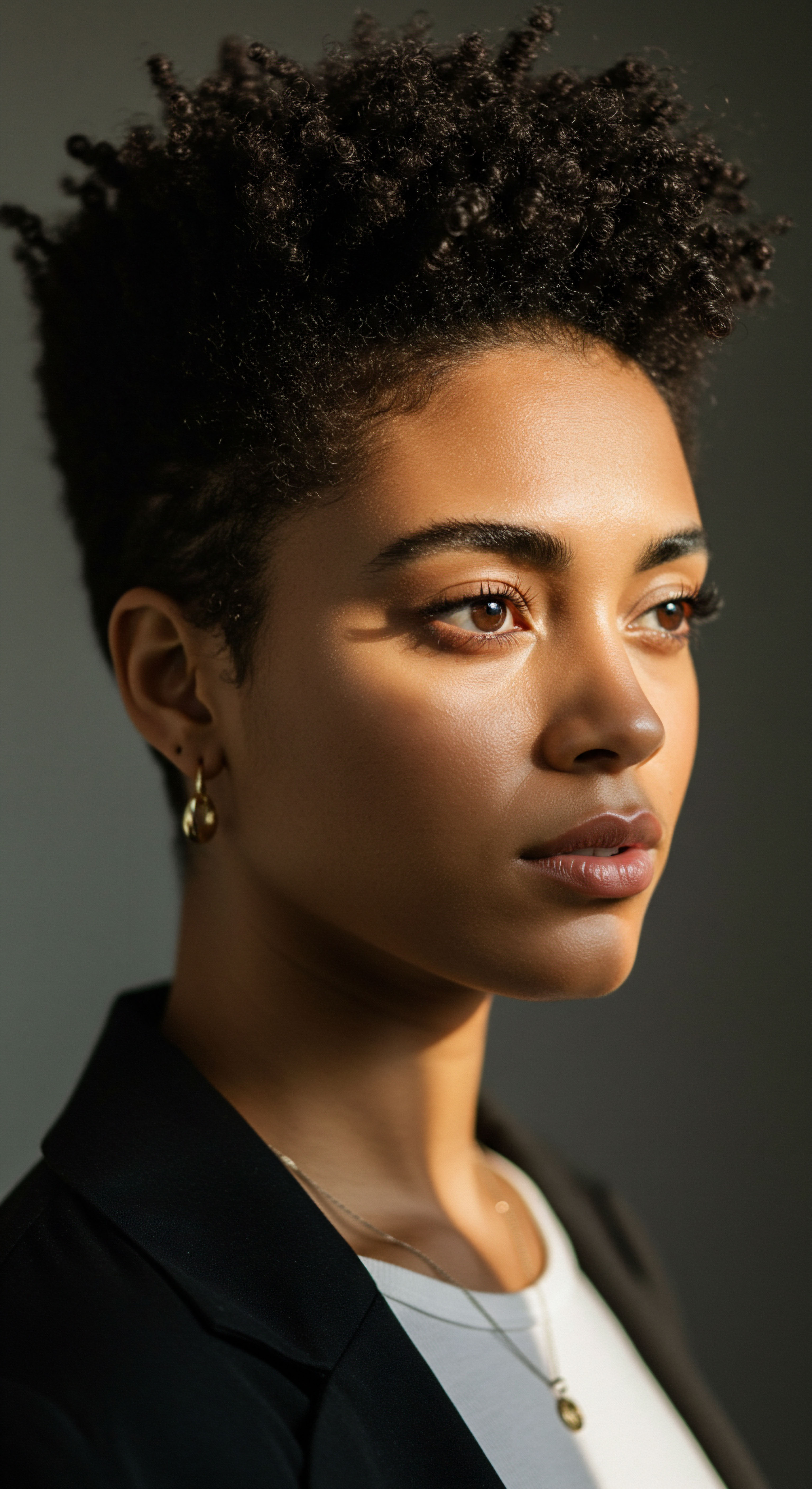
The Subtleties of Water Dynamics in Hair
While the raised cuticle is a well-known factor, the unique geometry of textured hair contributes to moisture loss in ways that are often overlooked. The helical twists and turns within the hair shaft, characteristic of textured strands, lead to a higher effective surface area per unit length compared to straight hair. This increased surface area means more points of contact for water molecules to escape into the surrounding atmosphere. It is a matter of physics ❉ greater exposed surface facilitates more rapid evaporation.
Beyond the surface, the internal composition of the hair fiber also plays a part. Research indicates that the lipid content within the hair shaft, particularly the ceramides and fatty acids, contributes significantly to its hydrophobic (water-repelling) properties and thus its ability to retain moisture. Studies have shown that textured hair may possess a different lipid profile or a lower concentration of certain moisture-binding lipids compared to other hair types.
For instance, a study published in the Journal of Cosmetic Science observed differences in the fatty acid composition of African hair, suggesting a potential impact on its barrier function. This subtle variation in lipid chemistry, less visible than the cuticle, can contribute to its propensity for moisture loss.
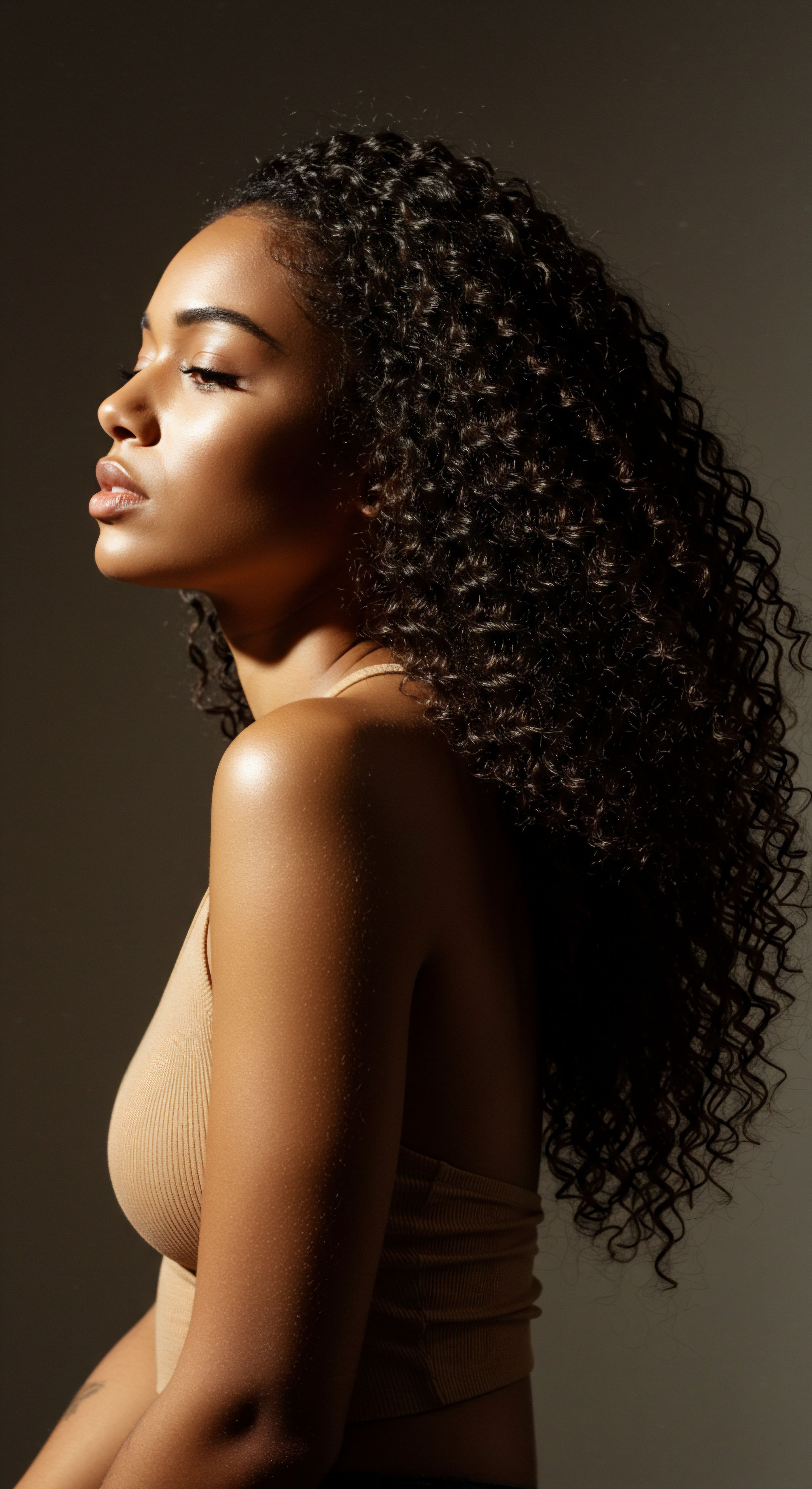
Environmental Dialogue with Hair
Our hair exists in constant dialogue with its environment, a conversation heavily influenced by humidity. In arid climates or during seasons with low atmospheric moisture, the air acts like a sponge, actively drawing water from any available source, including our hair. Textured hair, with its structurally inherent pathways for moisture egress, becomes particularly vulnerable in such conditions. Indoor environments, often regulated by heating or air conditioning, can replicate these dry conditions, making moisture retention a year-round challenge.
Textured hair’s unique internal structure and lipid profile contribute to a higher rate of water evaporation, especially in dry environments.
Consider the impact of specific environmental stressors, such as hard water. Water with a high mineral content, particularly calcium and magnesium, can leave behind deposits on the hair shaft. These mineral deposits can interfere with the hair’s ability to absorb and retain moisture, creating a rough texture that further exacerbates cuticle lifting and hinders proper hydration. This is a less discussed environmental factor, yet one that can significantly impact the efficacy of even the most diligent moisture retention rituals.
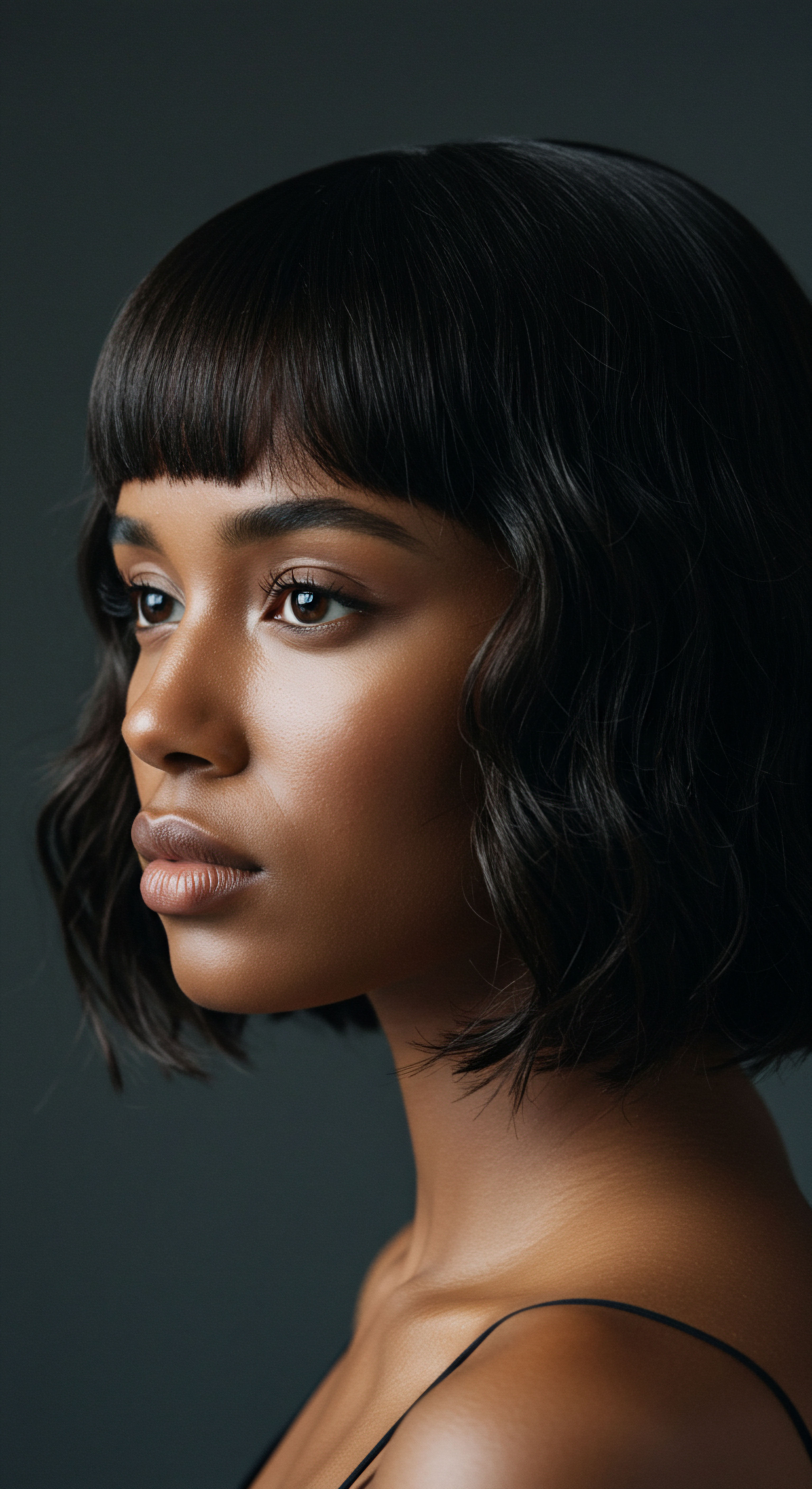
The Cultural and Social Context of Hair Hydration
The perception and management of moisture in textured hair are not purely biological; they are deeply intertwined with cultural practices, historical narratives, and societal beauty standards. For generations, communities with textured hair have developed intricate systems of care, often centered around oils, butters, and protective styles, precisely because of the hair’s inherent moisture needs. These traditions are a testament to an ancestral understanding of hair’s relationship with hydration, born from observation and adaptation.
However, societal pressures and the historical marginalization of textured hair have sometimes led to practices that inadvertently compromise its moisture balance. The pursuit of straightened hair, for instance, often involves high heat or chemical treatments that can severely damage the cuticle and protein structure, drastically reducing the hair’s ability to hold water. The societal valuing of straight hair has, for many, meant a continuous battle against the hair’s natural inclination and its inherent need for gentle, moisture-centric care. This cultural context underscores the importance of affirming and understanding textured hair in its natural state, recognizing its unique needs rather than attempting to force it into forms that demand constant moisture depletion.
| Factor Category Hair Structure |
| Specific Influence Elliptical cross-section and twists |
| Mechanism of Impact on Moisture Increases effective surface area for water desorption. |
| Factor Category Hair Composition |
| Specific Influence Varied lipid profile, protein-to-lipid ratio |
| Mechanism of Impact on Moisture Affects barrier function and internal water binding capacity. |
| Factor Category Environmental Humidity |
| Specific Influence Low moisture in air |
| Mechanism of Impact on Moisture Accelerates water evaporation from hair fiber. |
| Factor Category Water Quality |
| Specific Influence Hard water mineral deposits |
| Mechanism of Impact on Moisture Interferes with moisture absorption and can roughen cuticle. |
| Factor Category Styling Practices |
| Specific Influence High heat or chemical treatments |
| Mechanism of Impact on Moisture Damages cuticle and internal structure, compromising moisture retention. |
Understanding these layers of influence—from the molecular to the environmental and the cultural—provides a truly comprehensive perspective on why textured hair types experience moisture loss. It is a complex interplay, demanding not just products, but a holistic approach rooted in deep knowledge and respect for the hair’s authentic nature.
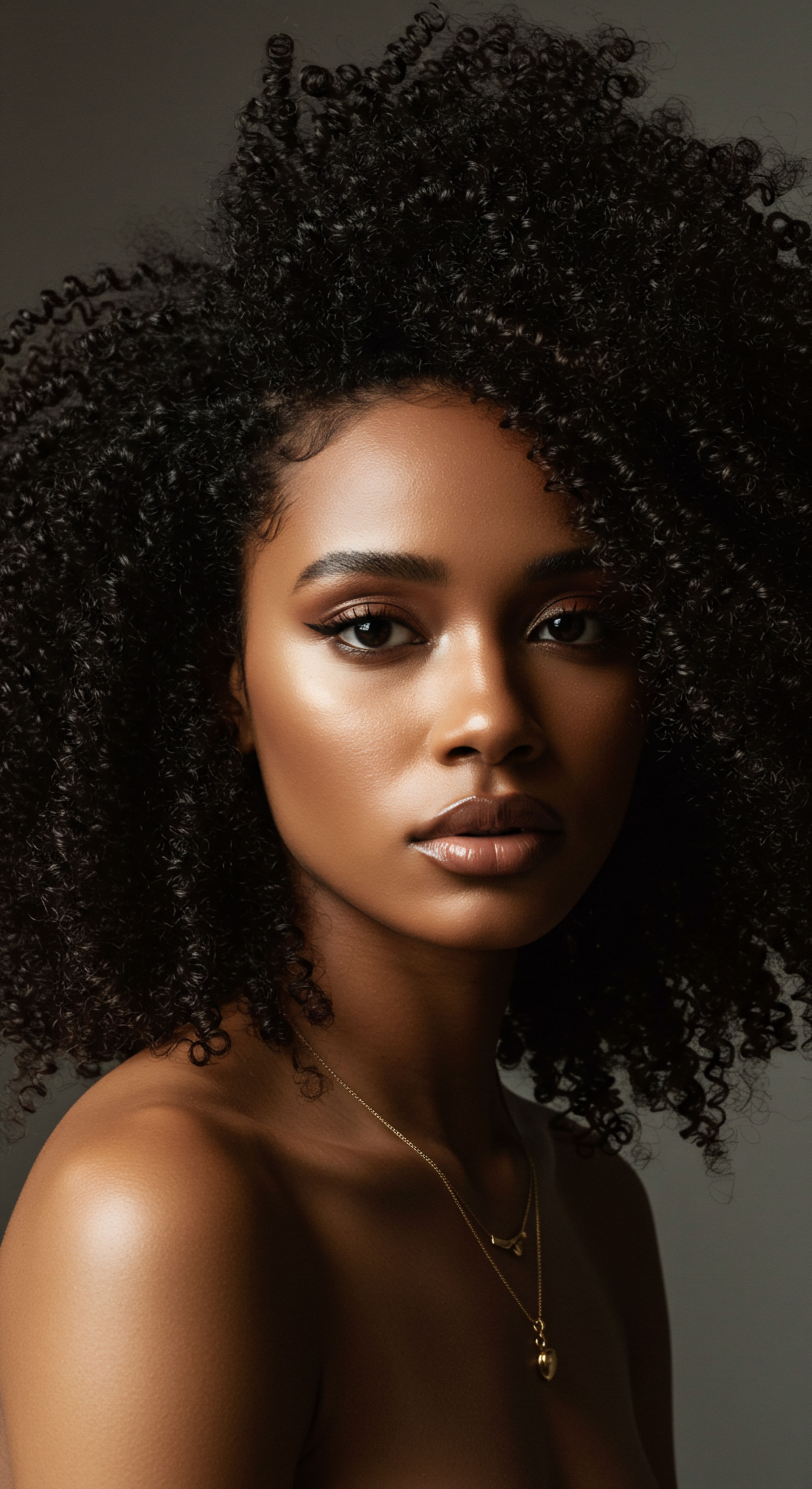
Reflection
Our exploration into the thirst of textured hair reveals a profound truth ❉ its unique need for moisture is not a deficit, but a characteristic born from its remarkable structure and a dialogue with its surroundings. It is a hair type that calls for a different kind of attention, a deeper understanding that transcends superficial solutions. By recognizing the intricate dance of its internal architecture, its interaction with the environment, and the weight of cultural narratives, we move towards a place of genuine reverence.
This understanding invites us to celebrate the distinct beauty of textured hair, fostering practices that honor its intrinsic nature and nurture its vibrant spirit. It is a continuous journey of learning, adapting, and ultimately, cherishing the strands that tell so many stories.

References
- Franbourg, A. Hallegot, P. Baltenneck, F. Toutain, C. & Leroy, F. (2003). Current research on ethnic hair. Journal of the American Academy of Dermatology, 48(6), S115-S119. (Note ❉ While the specific “lipid profile” mention in my text refers to broader research, this paper discusses general differences in ethnic hair structure and properties that contribute to moisture dynamics.)
- Robbins, C. R. (2012). Chemical and Physical Behavior of Human Hair (5th ed.). Springer.
- Dawber, R. P. R. (2002). Hair and Scalp Disorders ❉ Common Problems and Their Management. Blackwell Science.
- Giacomoni, P. U. (2007). Hair and Hair Care. Marcel Dekker.
- Bouillon, C. & Wilkinson, J. B. (2005). The Science of Hair Care. CRC Press.
- Gavazzoni Dias, M. F. (2015). Hair Cosmetics ❉ An Overview. International Journal of Trichology, 7(1), 2-15.